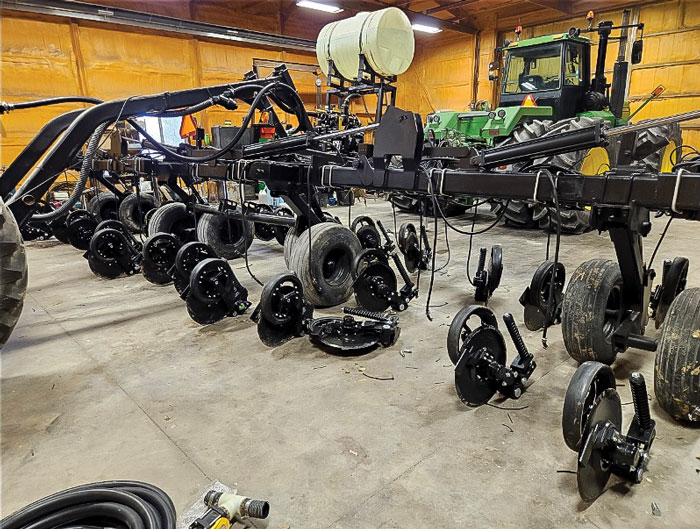When I first joined the Strip-Till Farmer team, I came across a story on our website with the headline, Want to Locate the Forefront of Agricultural Innovation? Find a Strip-Tiller.
“Innovate, innovator and innovation are words I find myself coming back to over and over again when writing about strip-tillers,” writes Michaela Paukner, my predecessor, in the first sentence of the story.
That was my introduction to this world, and those words ring true every time I talk with a strip-tiller. The innovation was on display at the 2024 National Strip-Tillage Conference in Madison, Wis., over the summer. When recruiting speakers for the program, I knew I had to get one of those innovators — Davenport, Iowa, strip-tiller Robb Ewoldt — to come and talk about the custom toolbar he’s building for his 15-inch soybeans.
Ewoldt enjoyed the 30-plus bushel boost he got with strip-till corn, but he felt like he was leaving money on the table with his no-till soybeans. Shooting for a goal of 75-plus bushels per acre with fertilizer placement in the root zone, he went to work in his “lab” (see photo below) and started building a toolbar that he could use in the fall ahead of soybeans.
“I call it Robb’s Folly because I have absolutely no clue if it’s going to work,” Ewoldt says. “Fortunately, we were in good economic shape, and I have an understanding wife that would allow me to spend some money to invest in something that I thought would work.”
He stripped down a used 40-foot Case IH 5310 DMI toolbar and added 31 new Yetter high-speed fertilizer coulters and a 1,200-gallon Montag cart. It cost about $100,000, money that he figures will be made up quickly if all goes according to plan.

“Strip-till increased my corn yields by about 14%, if I can just increase my soybean yields by 7%, it would be about 4 bushels per acre. Let’s say it’s $10 per bushel. $40 per acre on 1,000 acres is an extra $40,000 per year.”
His maiden voyage with the custom-built toolbar came with its fair share of “oh crap” moments, as Ewoldt puts it. Going through cornstalk residue and cereal rye on 15-inch spacing, achieving consistent 3-inch depth placement and working with high-salt suspension fertilizer were all significant challenges.
“I need you to help me before my wife gets home because I need to have an answer to this,” Ewoldt remembers saying on the phone to Yetter AOR manager Andy Thompson after failing to get the toolbar in the ground the first time he took it to the field.
“I had to adapt. I had to move forward,” says Ewoldt, and that’s exactly what he did, deploying the custom-built toolbar for the first time in the fall of 2023. Time will tell how well it worked, as he’ll soon collect his first harvest data. I have a feeling it’s going to pay off. If it doesn’t, then I’m sure Ewoldt will find a way to make it work because that’s what strip-till innovators do. Plus, what’s he going to tell his wife?
I’d love to hear about something innovative you’re doing on your farm. Email me at Nnewman@LessiterMedia.com. Good luck this harvest season!






